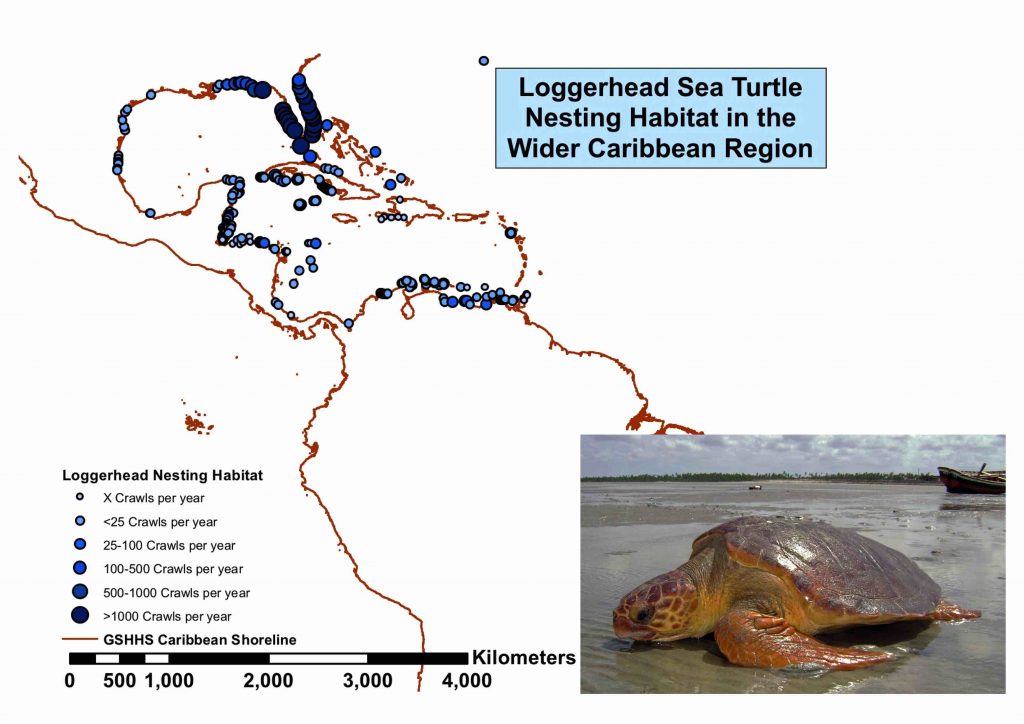Loggerhead sea turtles (Caretta caretta) nest on 394 beaches in the Wider Caribbean Region(*), the majority (71%) of which host fewer than 25 nests per year. With the exception of Lirios Balandrín, Mexico, all major nesting beaches in our region (north of Brazil) are located in Florida, which receives an estimated 90% of the nests associated with the Northwest Atlantic loggerhead nesting aggregation. We will not duplicate the trend line here because the annual total nest counts for loggerheads nesting on Florida Index Beaches are maintained for public viewing by the state of Florida’s Fish and Wildlife Research Institute HERE.
 (*) UNEP defines the Wider Caribbean Region (WCR) as comprising the States and territories of the insular Caribbean (including the Bahamas), the north-eastern sector of South America (Colombia, Venezuela, the Guianas), Central America, Mexico and the USA to 30ºN latitude, including the waters of the Caribbean Sea, the Gulf of Mexico, and the Atlantic Ocean adjacent to these States and territories.
(*) UNEP defines the Wider Caribbean Region (WCR) as comprising the States and territories of the insular Caribbean (including the Bahamas), the north-eastern sector of South America (Colombia, Venezuela, the Guianas), Central America, Mexico and the USA to 30ºN latitude, including the waters of the Caribbean Sea, the Gulf of Mexico, and the Atlantic Ocean adjacent to these States and territories.